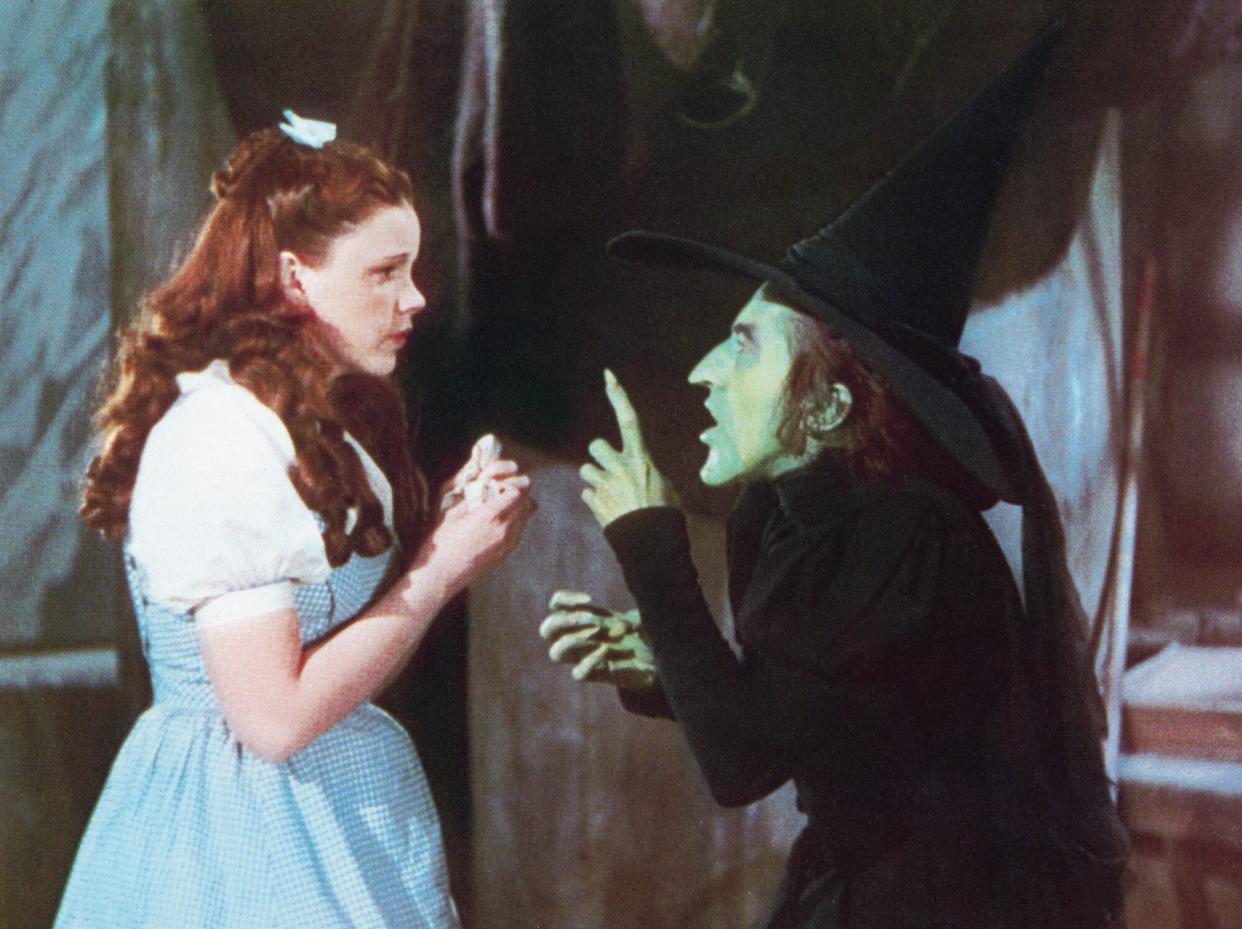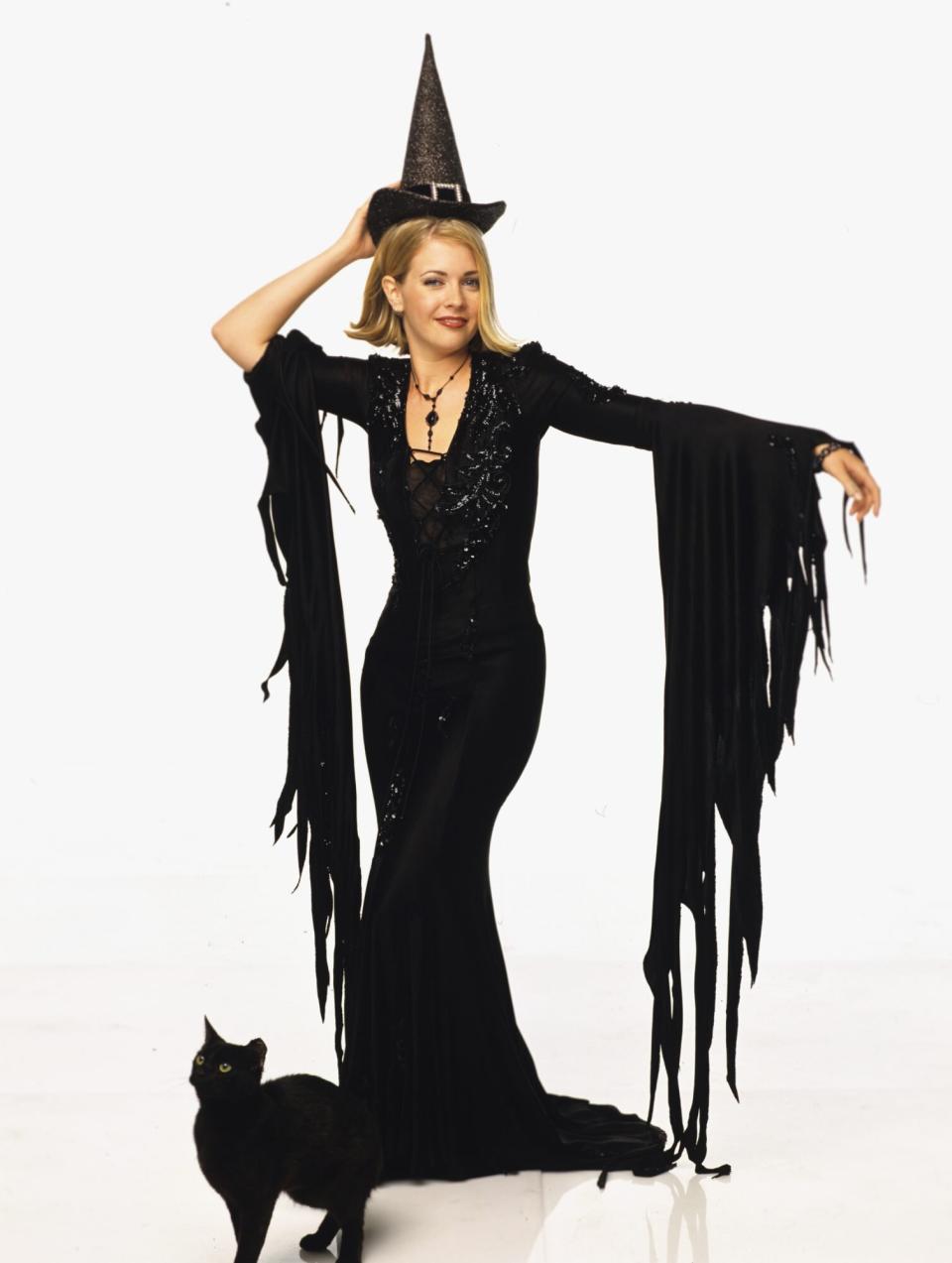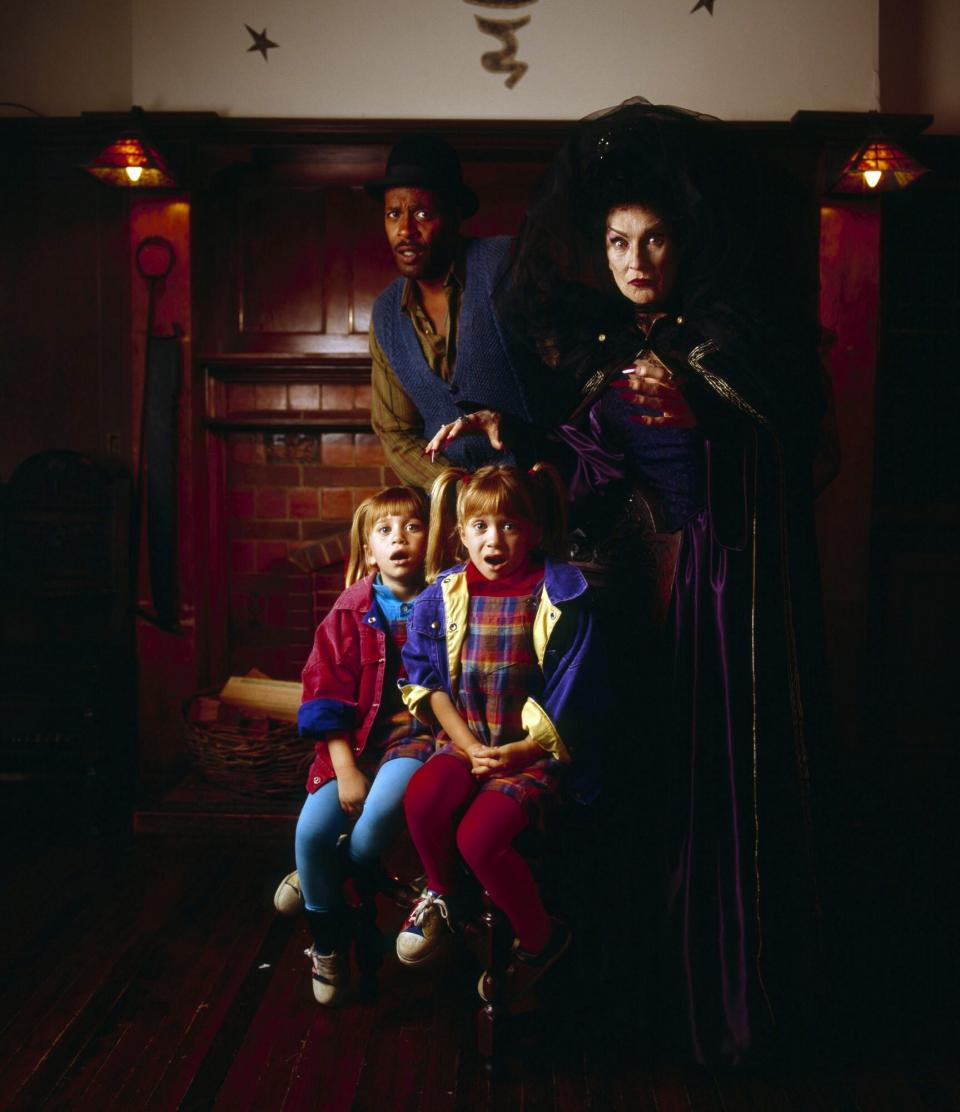So, There's Actually a Reason Why Witches Wear Pointed Hats and Fly On Brooms

FilmPublicityArchive/United Archives via Getty Images A still from the classic film The Wizard of Oz
As a witch myself, I've learned that the witch costume we know today holds a deeper meaning and that those pointy hats and broomsticks aren't just things they pulled out of the closet.
Ironically, the first known witch's outfit is nudity — as in, no clothes at all — which was depicted in paintings. But years later, the look evolved due to political allegiances, Hollywood's spin on these magical beings, and sex magic (yep, that's right).
Here's what's been said about witch fashion, and how each specific item came to be part of the traditional uniform.

George Lange/Walt Disney Television via Getty Images
The Cone-Shaped, Pointed Hat
The first known people to wear big, cone-shaped hats are from a lost city in China. Mummified remains from the "witches" of Subeshi, sisters accused of practicing magic in Turfan between the 4th and 2nd centuries BCE, were found with a pointed hat on their heads.
During the Middle Ages, pointed hats were actually associated with the Jewish religion — and, unfortunately, Satan. Participation in Kabbalah rituals had people believing that Jews held magical powers from making a deal with the devil, and in the 1200s, Jews in Hungary were required to wear this specific hat style to signify their religion. The Judenhat ("Jewish hat" or "horned skullcap") unsurprisingly became a target of Anti-Semitism, and soon after, during the European Witch Hunts, the powers at be in Hungary made all those accused of preaching magic wear them as punishment.
Somehow, despite the fact that the Quakers of the mid-1600s to 1800s didn't wear pointed hats, the style is still strongly associated with the group as well. Puritans in America believed the Quakers were magic practitioners who danced with the devil during the nighttime hours, and their hats, which were black and included wide brims, were part of the controversy.
In medieval Europe, women who brewed beer at home also had the reputation of being witches. These "alewives" were suspected of being herbalists, which was associated with magic at that time, but more importantly, they wore hats similar to the classic witch hat. Any woman who defied the patriarchal norms of the 1700s and 1800s was pretty much considered to be a Satan-worshipping sorceress, and since they worked in a male-dominated profession, they received major shade.
Even with all these cone-shaped hats throughout history, the style wasn't widely accepted as essential witch wear until The Wizard of Oz book (1900) and the subsequent movie (1939) were released. The character of the Wicked Witch of the West is known to wear a tall, pointed hat, and soon, our culture accepted it as being witchy wear.
RELATED: Three Witches Agree, This Is the Most Realistic Movie About Witches
Pointed Shoes
We often associate this shoe type with those who play 'tricks,' such as court jesters and elves. But, from the 14th to 16th centuries, pointy shoes were quite the popular fashion trend — before becoming controversial. The church eventually began to associate them with sex and sin, likely because of their phallic shape, and also thought they prevented people from being able to kneel while praying. They even became known as "Satan's Claws."
As for how witches got thrown into the mix? It could be due to that tie to Satan, and the fact that women wore them. But at the same time, witches had a reputation for loving shoes. People even hid or 'concealed' shoes in their houses as a way to protect themselves against evil.
Cloak and Capes
Historically, cloaks and capes offered a layer of protection and were especially popular during medieval times, which is perhaps how they became associated with the witch. Capes also became an essential part of the magical costume after the play Dracula came out in England. Bela Lugosi, who played the titular role, wore a dramatic cape in both the play and the movie. The choice ended up tying the layer to sorcery, vampires, and fantasy wear.

Walt Disney Television via Getty Images
The Broomstick
So, why are broomsticks a witch's accessory of choice? Here's the real tea: brooms weren't initially meant for flying — well, not literally anyway. They actually had a very different use than what we think.
Kristen Sollée, author of Witches, Sluts, Feminists: Conjuring the Sex Positive traced the history of the broomstick's real use back to the 15th century. Sollee states "the evidence is certainly suggestive that witches have been practicing sex magic for centuries with their lubed up broomstick-dildos."
Sollée further explains why the "flying myth" with broomsticks became an urban legend. "Witch trial transcripts do refer to witches rubbing hallucinogenic ointments on their genitals to facilitate altered states and magical flight."
Sex magic is a ritual that blends orgasms with visualization and manifestation. And, let's just say that witches practiced that tradition for hundreds of years — not just now (although it is a popular form of intention-seeking magic).
Stockings
The funny thing about witch's stockings is that there isn't any historical relevance to them. In fact, the reason why we assume witches wear them is quite comical.
Thanks to former Massachusetts-based company Ipswich Hoisery, we now assume that stockings are part of a witch's look. The brand's logo from the late 1800s to the late 1920s was an old witch wearing their stockings. In 1927, they decided to change their marketing and branding, adding attractive poppy cartoonish-looking witches to their logo.
Interestingly enough, they only depicted women as witchy old hags or sexy vixens in their campaign — and we are so much more!
However, beyond this company's marketing push, there's really no imperial proof of the importance of stockings in a witch's uniform.


